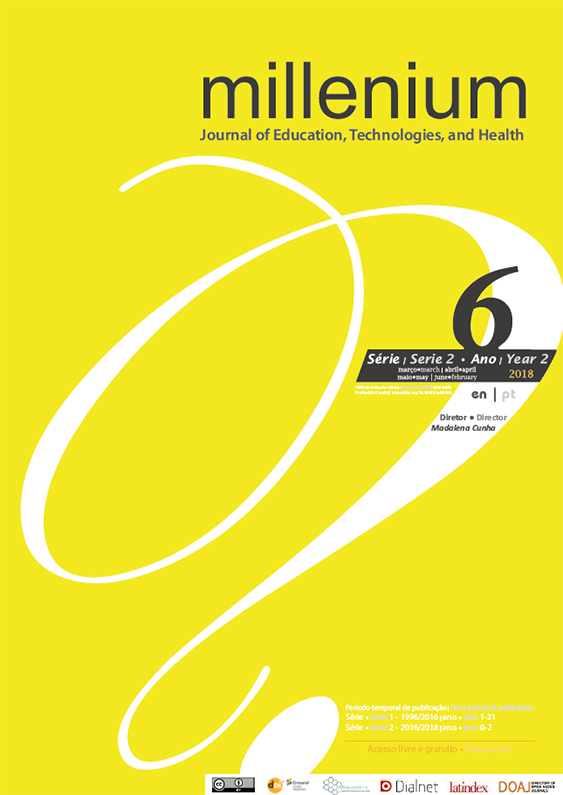Complicações da fluidoterapia em pacientes com pancreatite aguda: Uma contribuição
DOI:
https://doi.org/10.29352/mill0206.02.00160Palavras-chave:
Pancreatite aguda, Fluidoterapia, Complicações, Curvas ROC, Regressão logísticaResumo
Introdução: A fluidoterapia agressiva é frequentemente sugerida no tratamento da pancreatite aguda. No entanto, há alguma controvérsia sobre o efeito desta opção relativamente ao aparecimento de complicações clínicas e à necessidade de cirurgia.
Objetivos: Explorar a relação entre administração de fluidos nas primeiras 48 horas e o desenvolvimento de complicações, locais ou sistémicas, a fim de contribuir para esclarecer algumas questões nesta matéria.
Métodos: Este estudo é baseado em registros de 109 pacientes internados na Unidade de Cuidados Cirúrgicos Intermédios do Centro Hospitalar Tondela Viseu, entre 2007 e 2012, com diagnóstico de pancreatite aguda. Foi feita a exploração dos dados e aplicados testes estatísticos de modo a identificar variáveis que diferenciavam pacientes com complicações. As curvas ROC (Receiver Operating Characteristic) permitiram relacionar a quantidade de fluidos administrados nas primeiras 48h com a ocorrência de cada complicação. Modelos de regressão logística foram utilizados para identificar fatores de risco independentes para cada complicação.
Resultados: Não se registou relação significativa entre a terapia de fluidos às 48 horas com a morte nem com a ocorrência de complicações sistémicas. Ao contrário, a fluidoterapia às 48 horas revelou-se associada a complicações locais e tardias, presença de infeção e necessidade de cirurgia.
Conclusões: Níveis elevados de fluidos administrados nas primeiras 48 horas registaram-se associados ao desenvolvimento de complicações.
Downloads
Referências
Balthazar, E. J. (2002). Acute Pancreatitis: Assessment of Severity with Clinical and CT Evaluation. Radiology, 223(3), 603–613. http://doi.org/10.1148/radiol.2233010680
Banks, P. A., Bollen, T. L., Dervenis, C., Gooszen, H. G., Johnson, C. D., Sarr, M. G., Tsiotos, G. G. & Vege, S. S. (2012). Classification of acute pancreatitis--2012: revision of the Atlanta classification and definitions by international consensus. Gut, 62(1), 102–111. http://doi.org/10.1136/gutjnl-2012-302779
Blumgart L. (2016). Surgery of the liver, biliary tract, and pancreas. Philadelphia, PA: Saunders Elsevier.
Dupuis, C. S., Baptista, V., Whalen, G., Karam, A. R., Singh, A., Wassef, W., & Kim, Y. H. (2013). Diagnosis and management of acute pancreatitis and its complications. Gastrointestinal Intervention, 2(1), 36–46. http://doi.org/10.1016/j.gii.2013.03.001
Gardner, T. B., Vege, S. S., Pearson, R. K. & Chari, S. T. (2008). Fluid Resuscitation in Acute Pancreatitis. Clinical Gastroenterology and Hepatology, 6(10), 1070–1076. http://doi.org/10.1016/j.cgh.2008.05.005
Glasbrenner, B. & Adler, G. (1993). Pathophysiology of acute pancreatitis. Hepatogastroenterology. 40(6):517-521.
Hosmer, D. W. & Lemeshow, S. (2000). Applied Logistic Regression (2nd edition). New York: John Wiley & Sons.
Janisch, N. H. & Gardner, T. B. (2016). Advances in Management of Acute Pancreatitis. Gastroenterology Clinics of North America, 45(1), 1–8. http://doi.org/10.1016/j.gtc.2015.10.004
Kalkwarf, K.J. & Cotton, B. A. (2017). Resuscitation for Hypovolemic Shock. Surgical Clinics of NA, 97(6), 1307–1321. http://doi.org/10.1016/j.suc.2017.07.011
Mao, E.Q., Tang, Y.Q., Fei, J., Qin, S., Wu, J., Li, L., Min, D. & Zhang, S.D. (2009). Fluid therapy for severe acute pancreatitis in acute response stage. Chinese Medical Journal, 122(2), 169–173. http://doi.org/10.3760/cma.j.issn.0366-6999.2009.02.011
Nasr, J. Y. & Papachristou, G. I. (2011). Early Fluid Resuscitation in Acute Pancreatitis: A Lot More Than Just Fluids. Clinical Gastroenterology and Hepatology, 9(8), 633-634. http://doi.org/10.1016/j.cgh.2011.03.010
Pereira, J., Constantino, J., Duarte, L., Pinho, H., & Pinheiro, L. (2015). Surgical treatment of severe acute pancreatitis: After 15 years of practice. International Journal of Hepatobiliary and Pancreatic Diseases, 5, 74-81. http://doi.org/10.5348/ijhpd-2015-38-OA-13
Pollock, A. V. (1959). Acute pancreatitis; analysis of 100 patients. British Medical Journal, 1(5113), 6–14.
Stigliano, S., Sternby, H., de Madaria, E., Capurso, G., & Petrov, M. S. (2017). Early management of acute pancreatitis: A review of the best evidence. Digestive and Liver Disease, 49(6), 585–594. http://doi.org/10.1016/j.dld.2017.01.168
Tenner, S., Baillie, J., DeWitt, J. & Vege, S. S. (2013). American College of Gastroenterology guideline: management of acute pancreatitis. The American Journal of Gastroenterology, 108(9), 1400–1415. http://doi.org/10.1038/ajg.2013.218
Yang, C. J., Chen, J., Phillips, A. R. J., Windsor, J. A., & Petrov, M. S. (2014). Predictors of severe and critical acute pancreatitis: A systematic review. Digestive and Liver Disease, 46(5), 446–451. http://doi.org/10.1016/j.dld.2014.01.158
Downloads
Publicado
Como Citar
Edição
Secção
Licença
Os autores que submetem propostas para esta revista concordam com os seguintes termos:
a) Os artigos são publicados segundo a licença Licença Creative Commons (CC BY 4.0), conformando regime open-access, sem qualquer custo para o autor ou para o leitor;
b) Os autores conservam os direitos de autor e concedem à revista o direito de primeira publicação, permitindo-se a partilha livre do trabalho, desde que seja corretamente atribuída a autoria e publicação inicial nesta revista.
c) Os autores têm autorização para assumir contratos adicionais separadamente, para distribuição não-exclusiva da versão do trabalho publicada nesta revista (ex.: publicar em repositório institucional ou como capítulo de livro), com reconhecimento de autoria e publicação inicial nesta revista.
d) Os autores têm permissão e são estimulados a publicar e distribuir o seu trabalho online (ex.: em repositórios institucionais ou na sua página pessoal) já que isso pode gerar alterações produtivas, bem como aumentar o impacto e a citação do trabalho publica
Documentos necessários à submissão
Template do artigo (formato editável)





